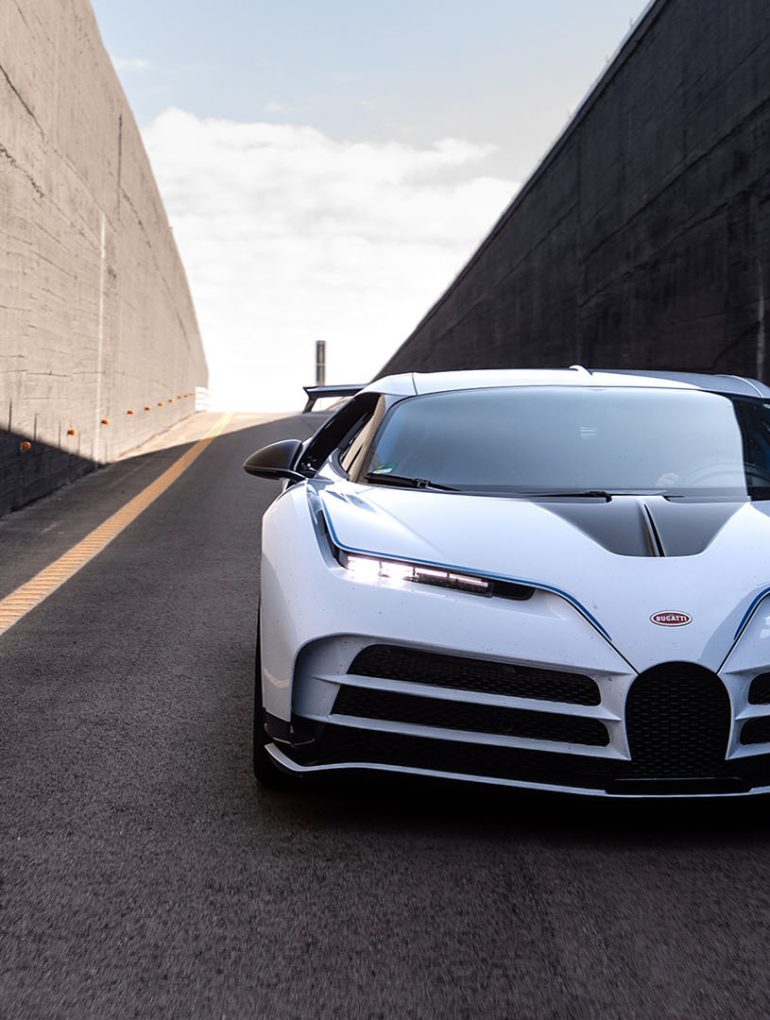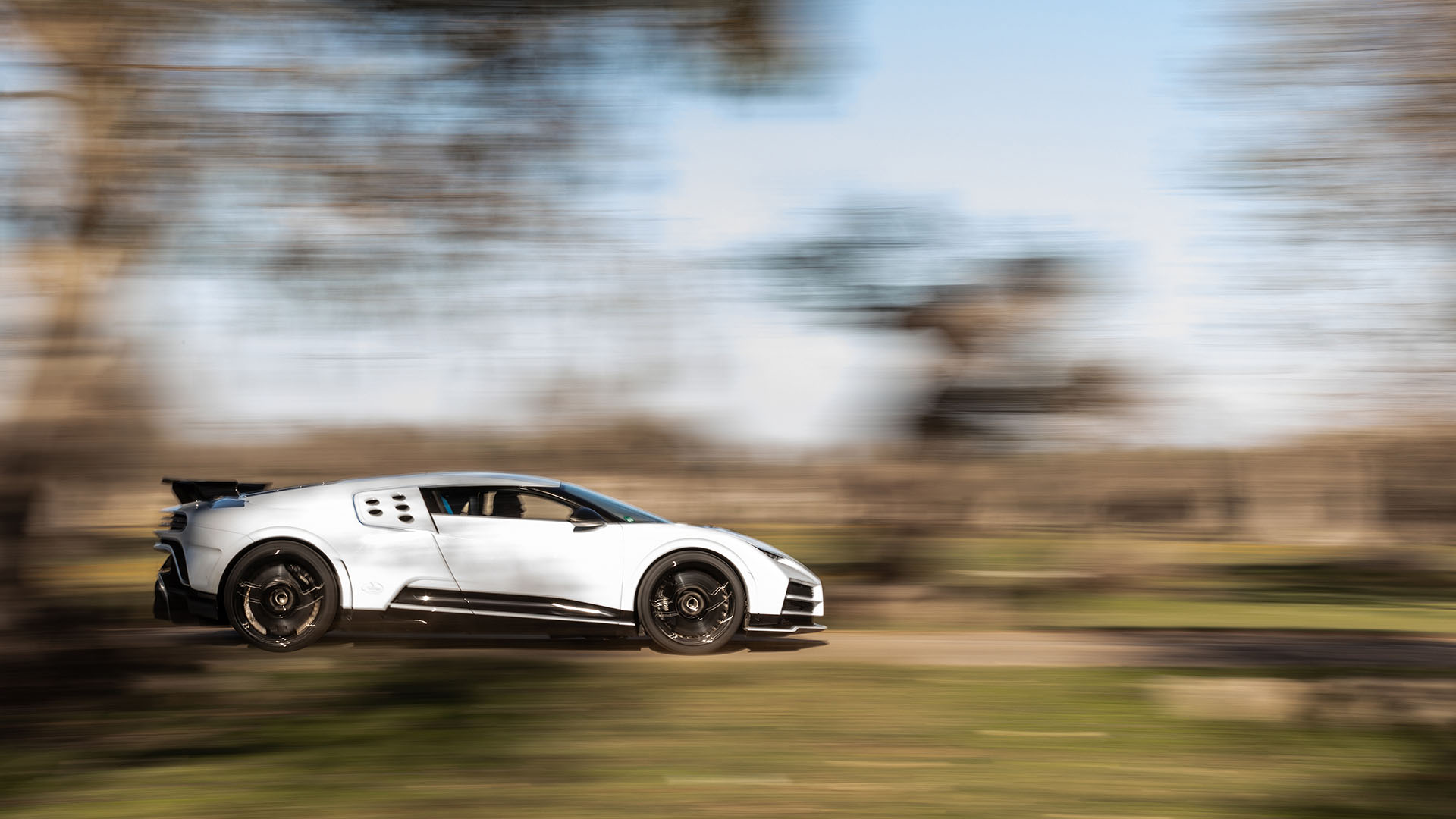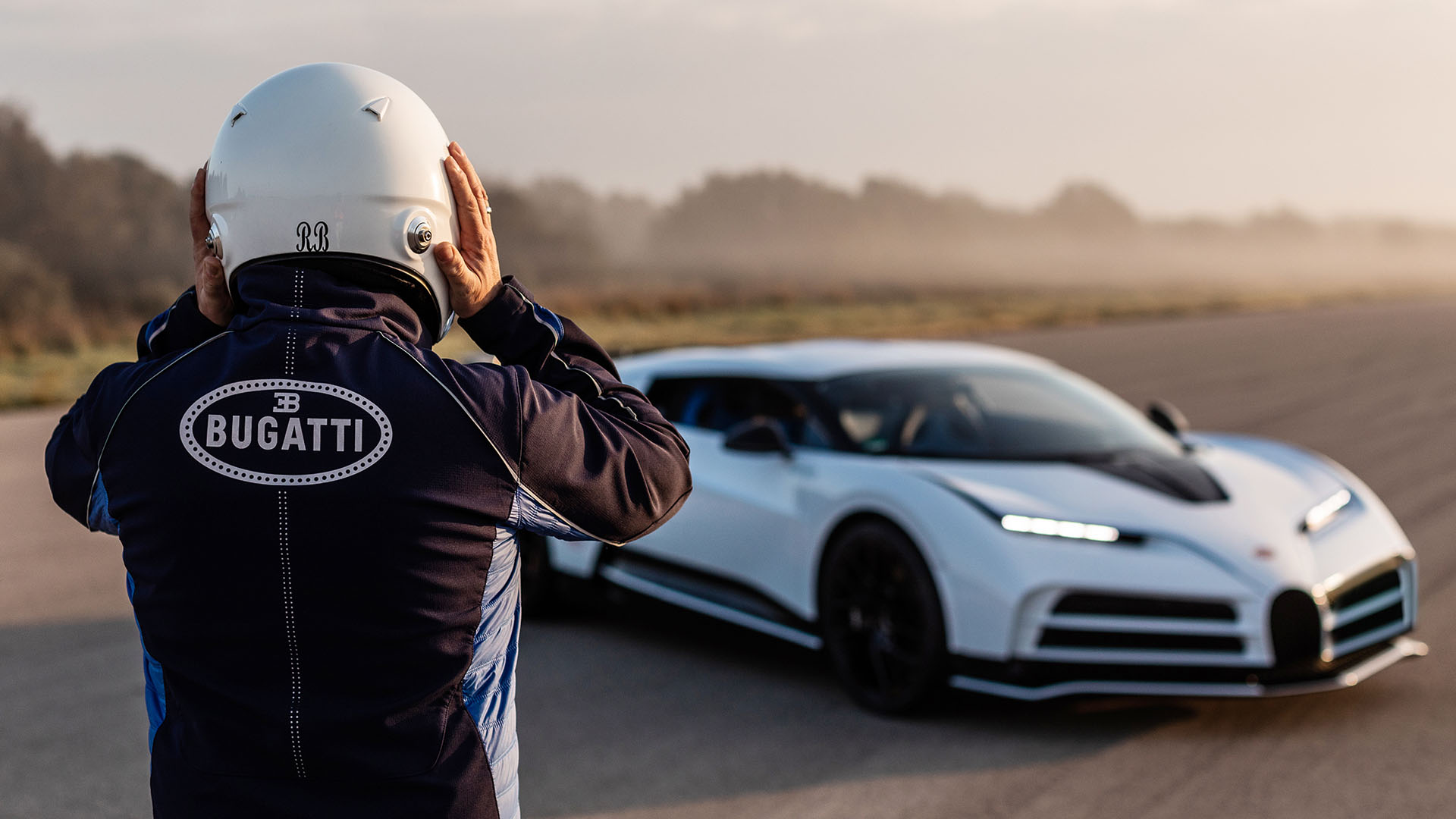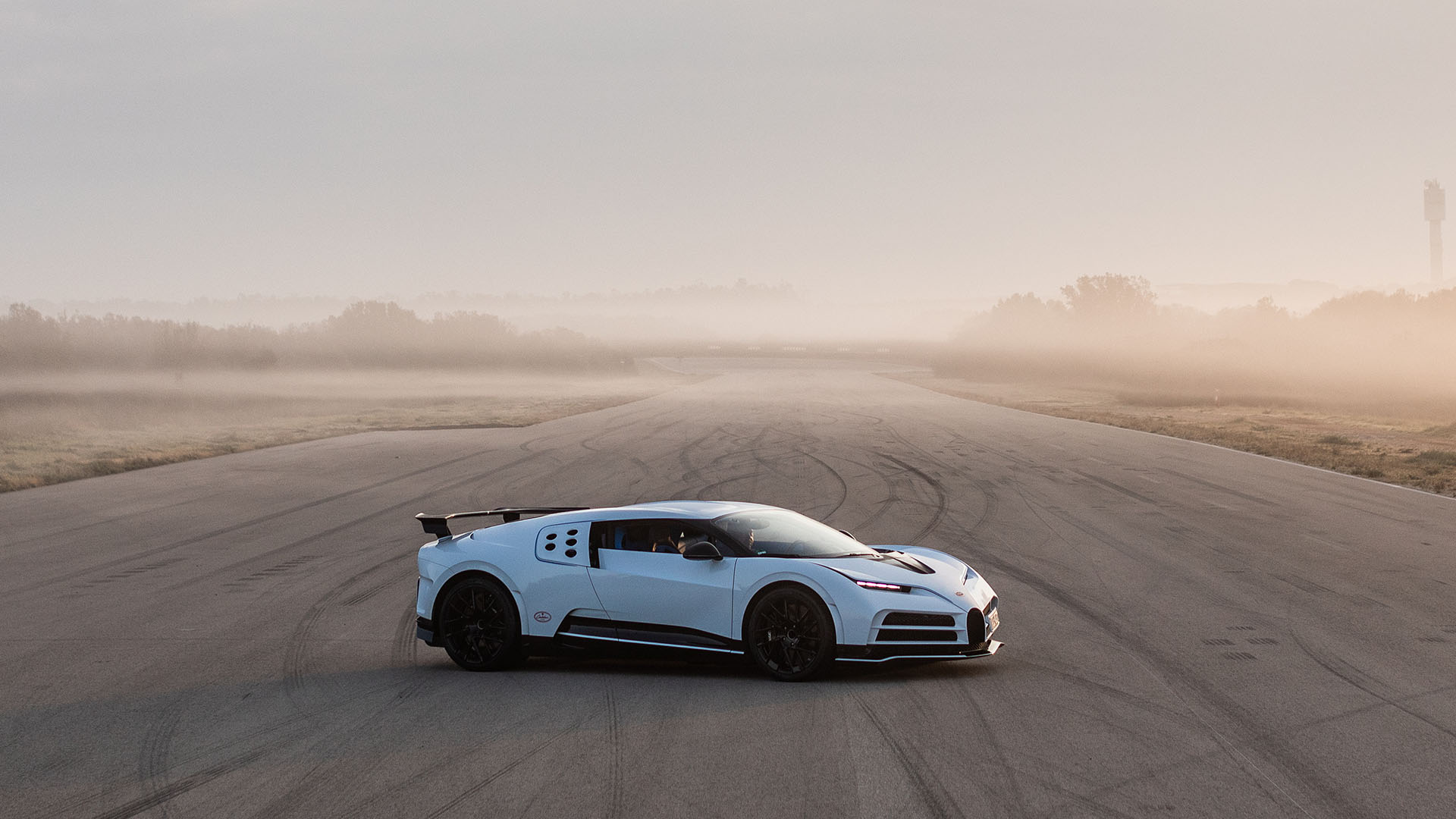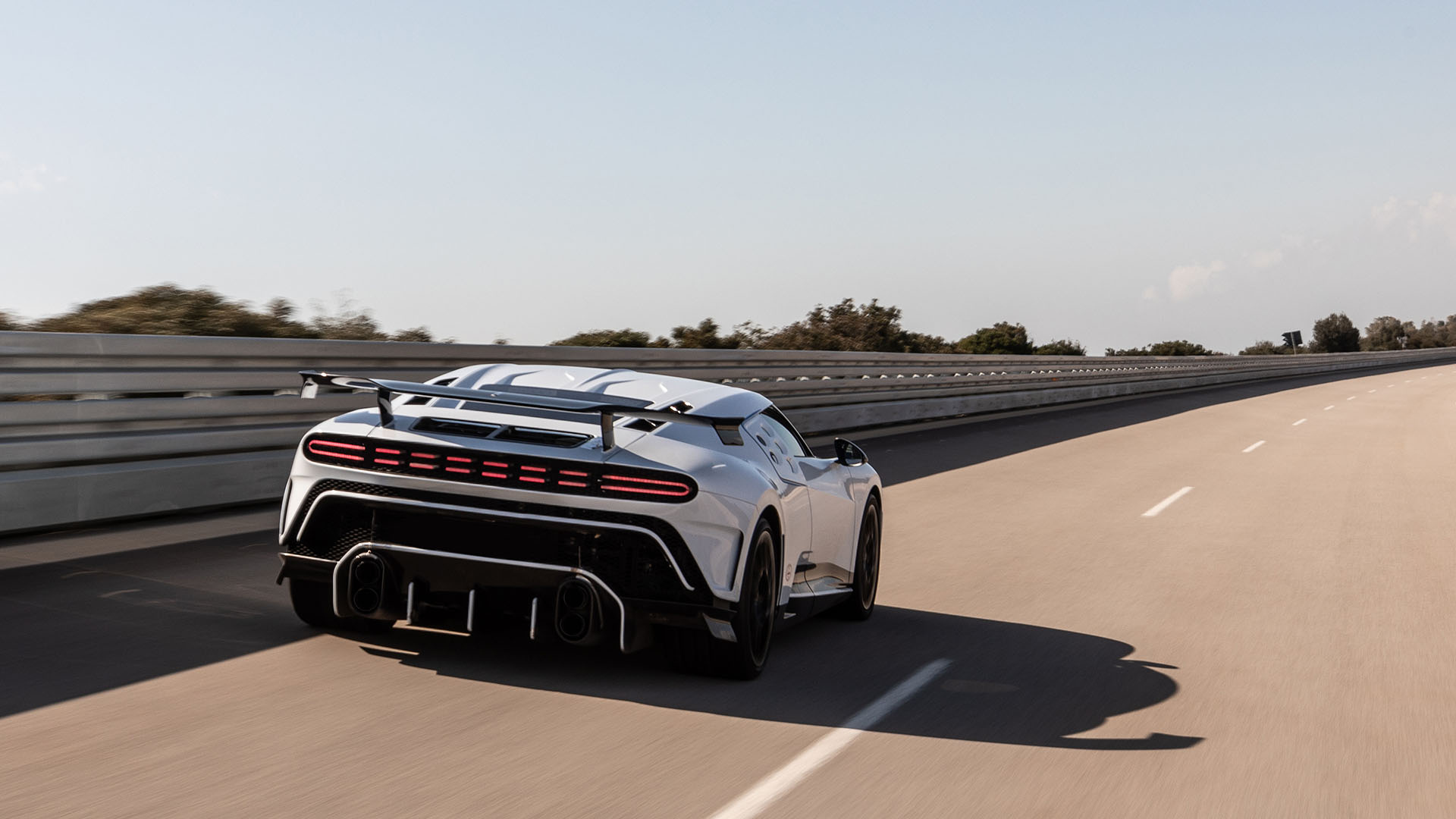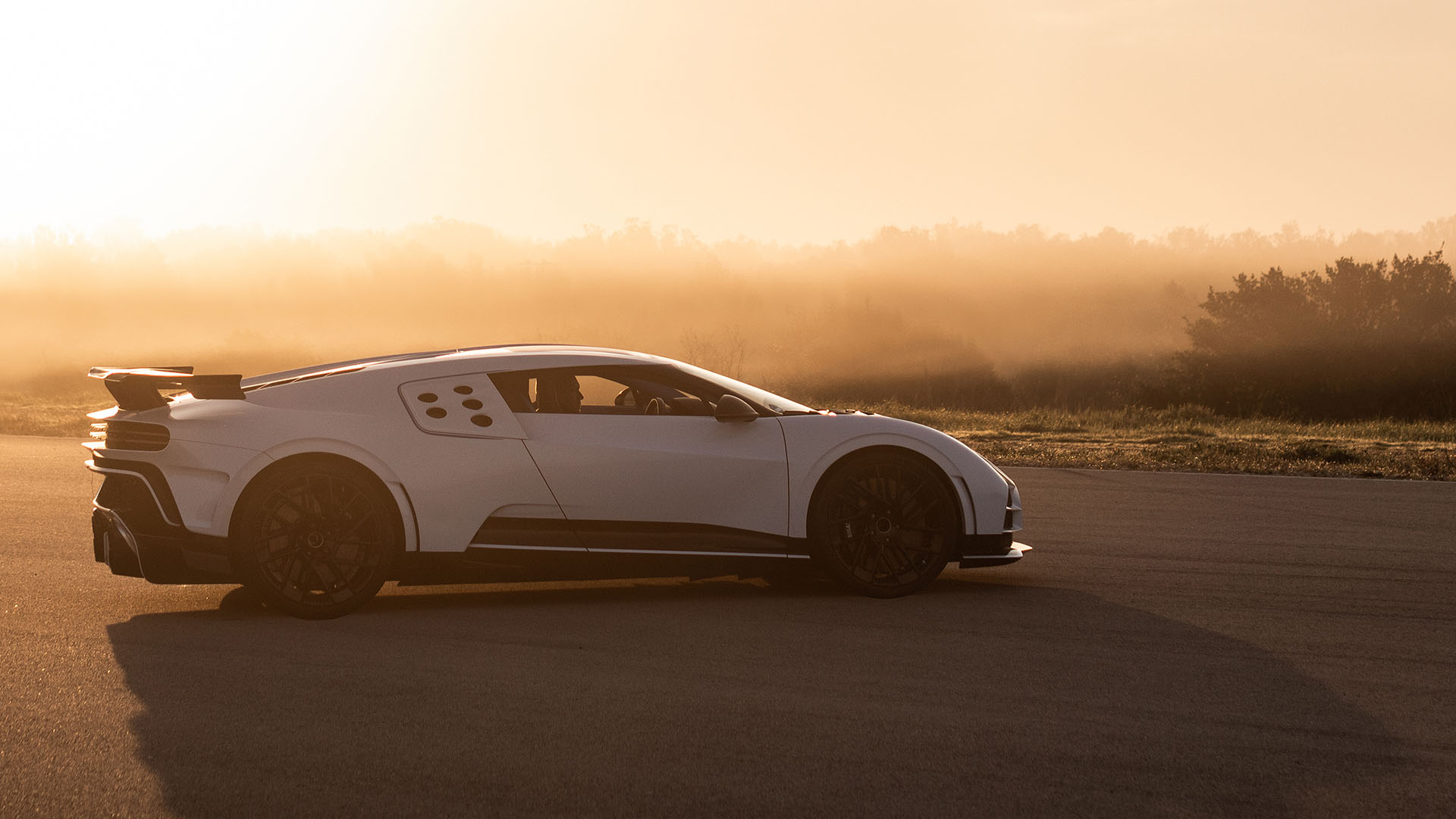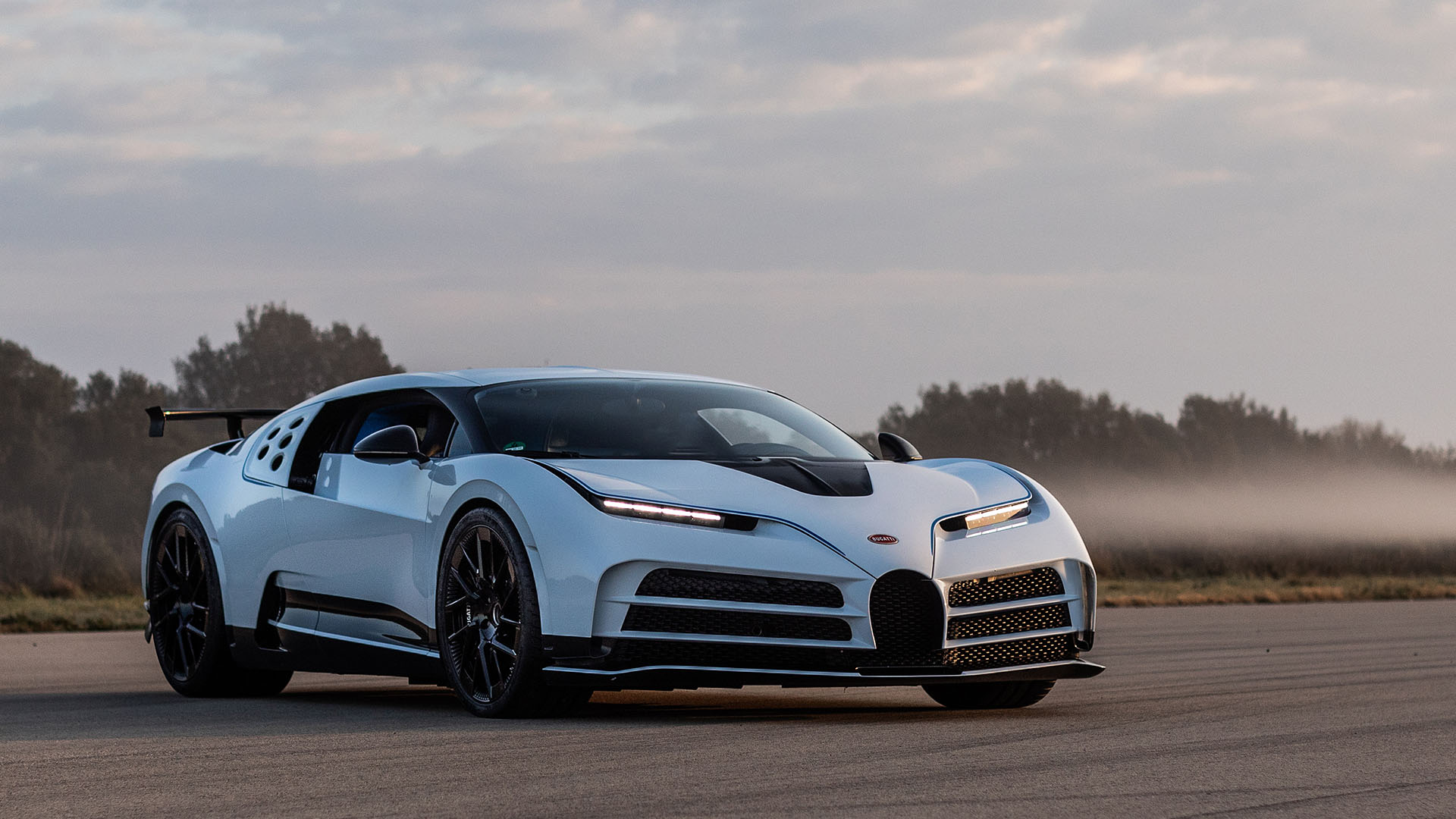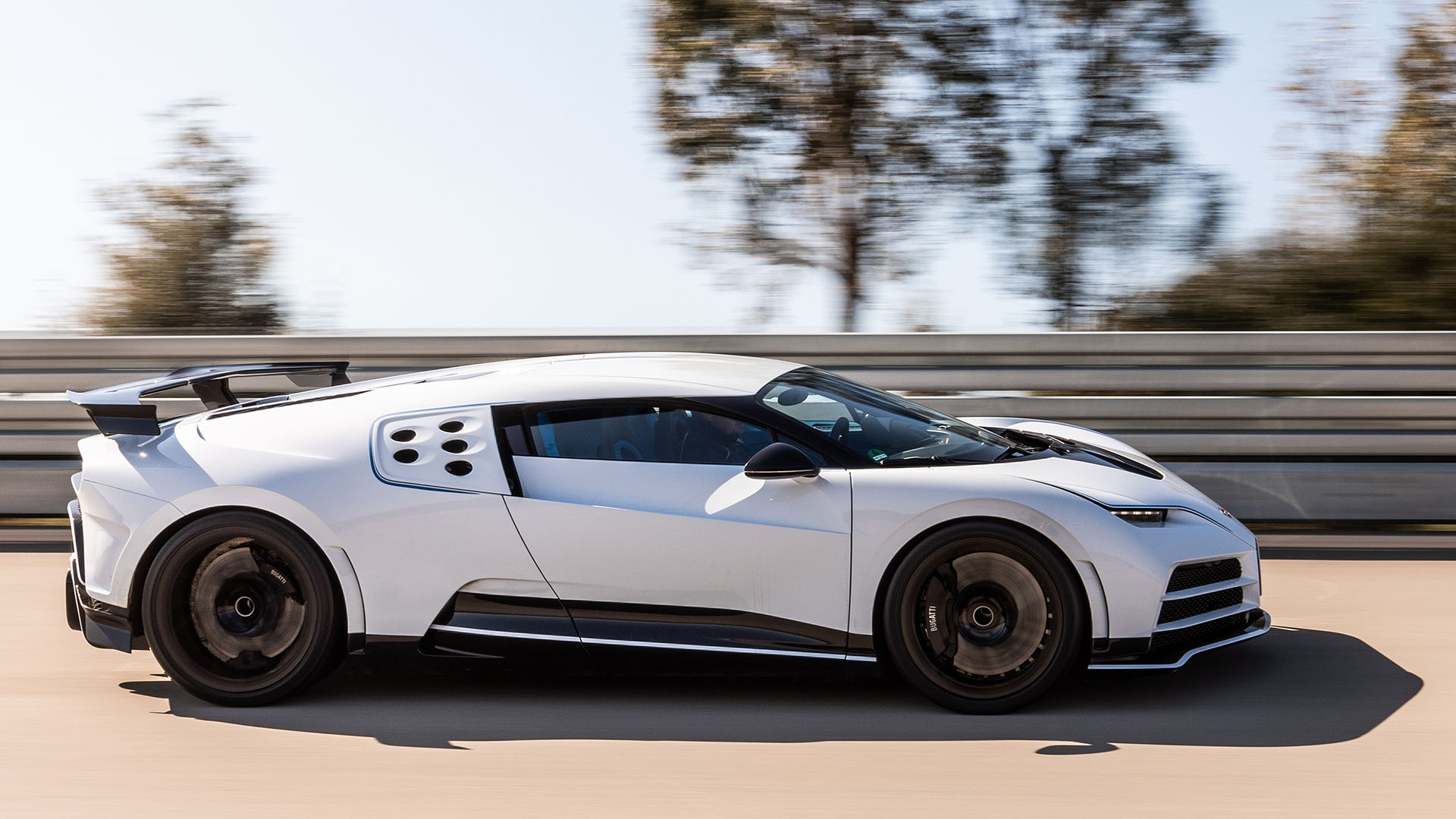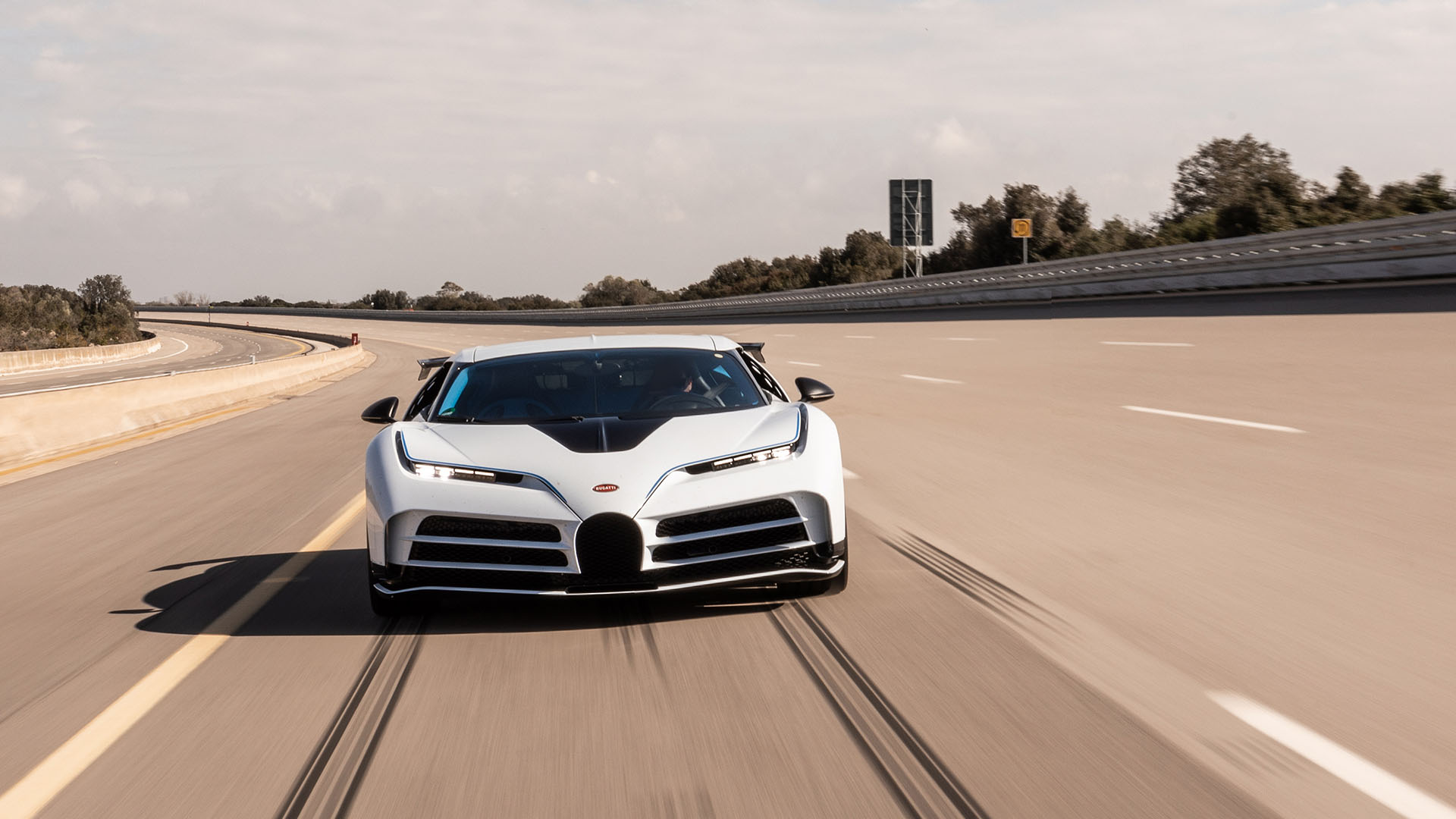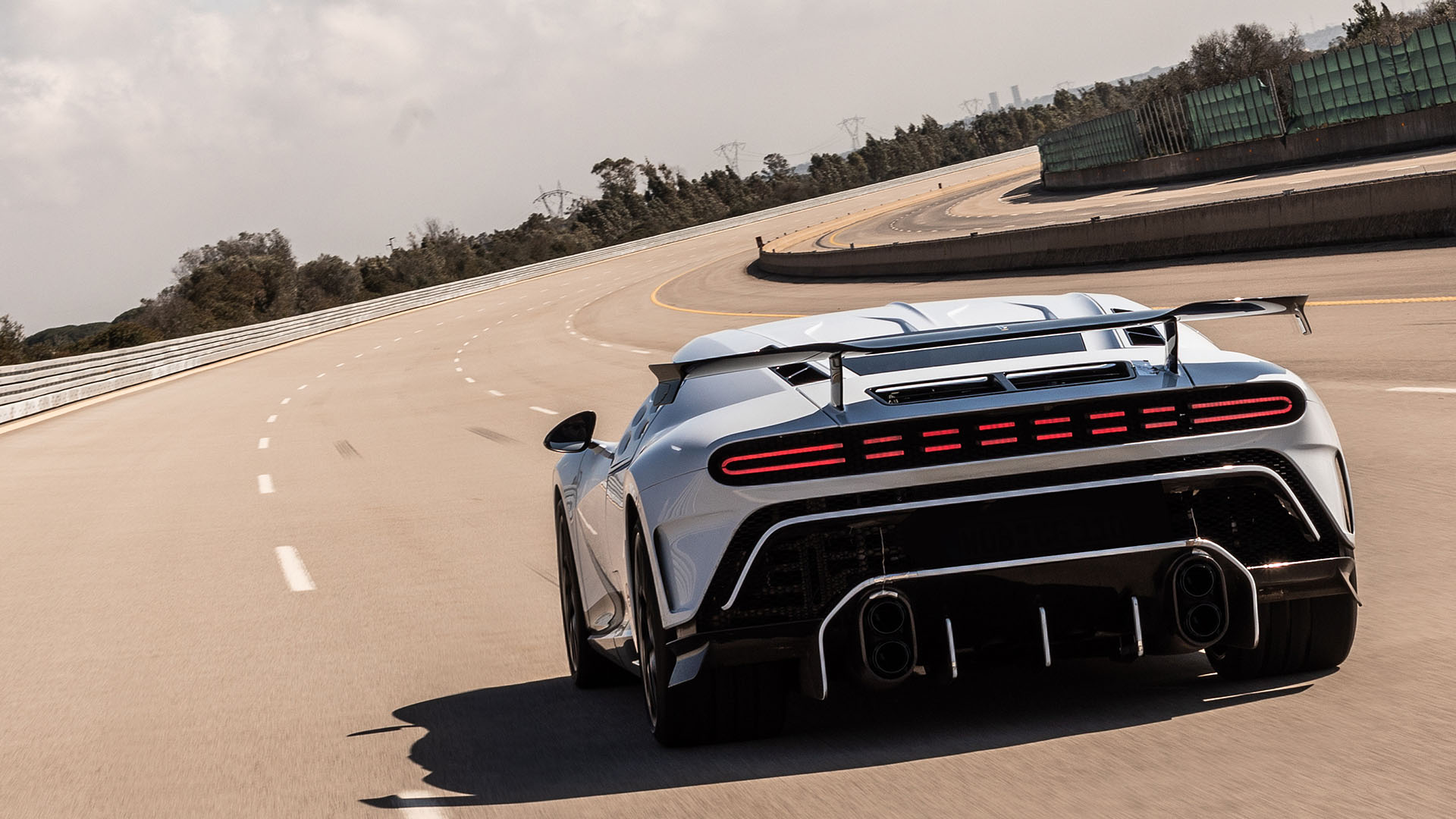In the end, we’ll be seeing a total production of just 10 units for the amazing Bugatti Centodieci, an homage to another great Bugatti, the 90s EB110, back in the Nineties a V12 with four turbochargers delivering 610 PS was an amazing feat, making the Bugatti EB110 a reference car for years, today we have 16 cylinders in a W configuration, still four turbos, but the power went through the roof with 1,600 PS now, and while the Bugatti Centodieci was unveiled back in 2019, exactly 110 years after Bugatti was founded in 1909, with a staggering MSRP of €8,000,000 (nearly US $10 million), all ten units have been sold a long time ago.
This brings us to the title of this article, and no, none of these 10 units have been delivered to their clients yet, I’m talking about the bright white production prototype, the so-called ‘Car Zero’, which has been visiting countless events ever since Bugatti completed this prototype, but it also covered a total of more than 50,000 kilometers ( just over 31,000 miles) during harsh endurance testing, both on the track, and on the open road, which arguably will make this specific chassis the Bugatti Centodieci with the most amount of miles on the counter as I highly doubt any of the ten customer cars will amas that kind of distance during her life.
“With its high-speed circuit and handling course, the Nardò test center provides the ideal conditions for intensive endurance tests,” says Steffen Leicht, who is responsible for all endurance testing at Bugatti. The 12.6-kilometer-long circular track with a diameter of four kilometers is considered the fastest automotive circuit in the world – perfect for the 380 km/h Centodieci. The 6.2 kilometer-long handling course on the inner section permits checks at the highest load levels and with longitudinal and transverse dynamics. The over 70 hectare-large site at Nardò provides 70 kilometers of roads with different surfaces, enabling extensive testing and inspection of all vehicle components.
To complete such a rigorous endurance test takes a team of engineers to compile sensor readouts on the fly while no less than three different pilots drive the car around the track all day long, 24/7, this is even worse than a 24h of Le Mans race, driving is done during day and night to make sure they get all the data for different circumstances, over variable track conditions, and at speeds that they continue to rotate around, from stopping to quick accelerating, all the way up to the 380 km/h top speed.
During these hour-long drives, the pilots have to stay concentrated, they need to listen to every little sound the car makes, judge if it’s an anomaly or not, undergo slight modifications to the car’s settings, and determine if that’s a change for the best, or if it should be undone on the actual production version, all while driving on a dry surface, and do it all again over a wet surface, during the night they can test driving on colder asphalt because it heats up during the day, and when it’s done, it is all inspected one final time, testing every little steering movement, braking, acceleration, cornering load, and functionality of the driver assistance systems.
It took nearly 50 days to complete these endurance tests, with the single production prototype available covering on average 1,200 km every single day, the only downtime for this test mule is during technical check-ups, refueling, and when the next driver takes the wheel of this multi-million dollar test mule. “We assess every element on the vehicle one last time, paying particular attention to functionality and durability before the first Centodieci cars go into production,” explains Carl Heilenkötter – project manager responsible for one-off and few-off projects at Bugatti.
While the Bugatti Centodiece was mainly a static beauty on display during most of the event in 2021, like the one on the banks of Lake Como, apart from a small parade now and then, things changed considerably for this unique prototype shortly after leaving Italy when she was shipped to Mount Lemon to the north of Tucson, Arizona in the United States of America for high-altitude and high-temperature testing … up to 45°C (113°F), the decision to take the cars into the US deserts was made as the temperature can go over 50°C to create an extremely hostile environment for hypercars like the Bugatti Centodiece.
“Testing in the hot, dry desert is a huge help for us in the development process. All Bugatti models have to function perfectly no matter how high the temperature, including the few-of Centodieci. Even if we are only creating ten cars, as with the Centodieci, the testing procedure is just as grueling. Every model has to run flawlessly in all weather and in all traffic conditions,” explains Stefan Schmidt, an engineer in Overall Vehicle Development at Bugatti.
“The Centodieci is deliberately driven to its limits in order to guarantee reliable handling at the highest level, even in extreme situations. Even though most cars never enter this range, it is nonetheless tested. This is the philosophy of the brand and that is why we put such a huge amount of effort into all this testing. Bugatti is committed to the highest quality standards, durability, and customer satisfaction,” says Carl Heilenkötter. The endurance tests in Nardò represent the final act of the endurance trials that took place after the hot-environment testing in the US.
Production of the ten customer units of this impressive Bugatti Centodieci is set to start shortly at Molsheim in France, the intention from Bugatti is to have all units delivered to those lucky few that managed to get on this shortlist by the end of 2022, and as most likely all of these will be a totally bespoke build for each and every client, some of these 10 Centodieci might take a while to complete, remember, it took the Bugatti atelier 18 months to complete the Bugatti Divo ‘Lady Bug’, I for one can’t wait to see what these 10 customers came up with for their Centodieci.


